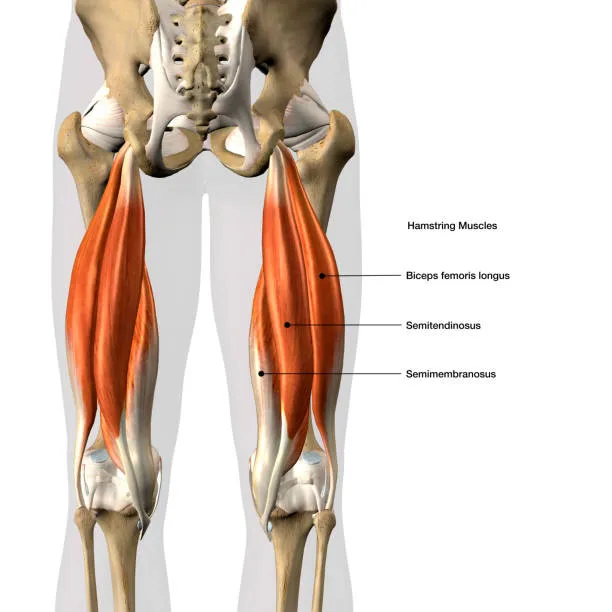Sciatica
Do you, or someone who knows has pain in the back of their leg when running? Are you currently having pain from a hamstring strain/tear? Have you ever been playing a sport and all of the sudden had a sharp pain in the back of your leg? Do you experience frequent back pain and are unable to find the source of the pain?
No one should suffer from pain- call now Elite Muscle Recovery at 423-664-8452 or click the link below
Hamstrings are the muscle group located on the back of the thigh. Hamstrings are often referred to as the posterior thigh muscles, their technical names are semimembranosus, the semitendinosus, and the biceps femoris muscles. These muscles span the thigh, crossing both the hip and knee joint. They are responsible for bending (Flexion) the knee and moving the hip backward ( extension). Remember the question do you have low back pain? Did you know you can have low back pain from tight hamstrings? In the picture below, you will see the hamstring pulls on your sit bone ( Ischial Tuberosity). They make you round your lower back when bending over to pick something up. This puts a lot of tension on the muscles in the lower back, which can lead to muscle strain and compression between the joints. This can cause a variety of things to happen which can result in disc problems and/or sciatica. So it is in fact possible your back pain is coming from tight hamstrings.

Surprisingly, these large muscles (Hamstrings) are not very active with normal walking or standing. However, they are extremely important in POWER activities such as running, jumping, and climbing. Thus, sedentary individuals can get by with quite weak or deconditioned hamstrings, whereas athletes absolutely depend on healthy, well-conditioned hamstrings.
Hamstrings injuries are normally muscle strain injuries. Hamstring injuries typically are caused by rapid acceleration activities such as running or jumping. Hamstring injuries are common in sports such as soccer, football, baseball, volleyball, and track. Even common exercises, such as jumping rope, tennis, and elliptical machine walking, can lead to injury of the hamstring muscles.
Injuries to the hamstring group of muscles can range from a minor strain to a major rupture. A minor strain is classified as a grade I tear, whereas a complete rupture, or tear, is classified as a grade III tear. Grade II tears are partial ruptures. Any type of strain usually will have some bruising and tenderness involved. Normally, surgery is not required for hamstring injuries. It is important to begin a program of stretching and range-of-motion rehabilitation exercises because prolonged immobilization and inactivity result in muscle deterioration and scar tissue.
Click the link below to see a stretch you could do daily 2-3x/day to help alleviate tight hamstrings. Remember, you should hold the stretch for at least 30 seconds for a good effective stretch and for lengthening to occur.
If you are still having pain in the back of the leg or low back, please come in and see us. We would love to help you solve your problem and get back to the activities you know and love!



